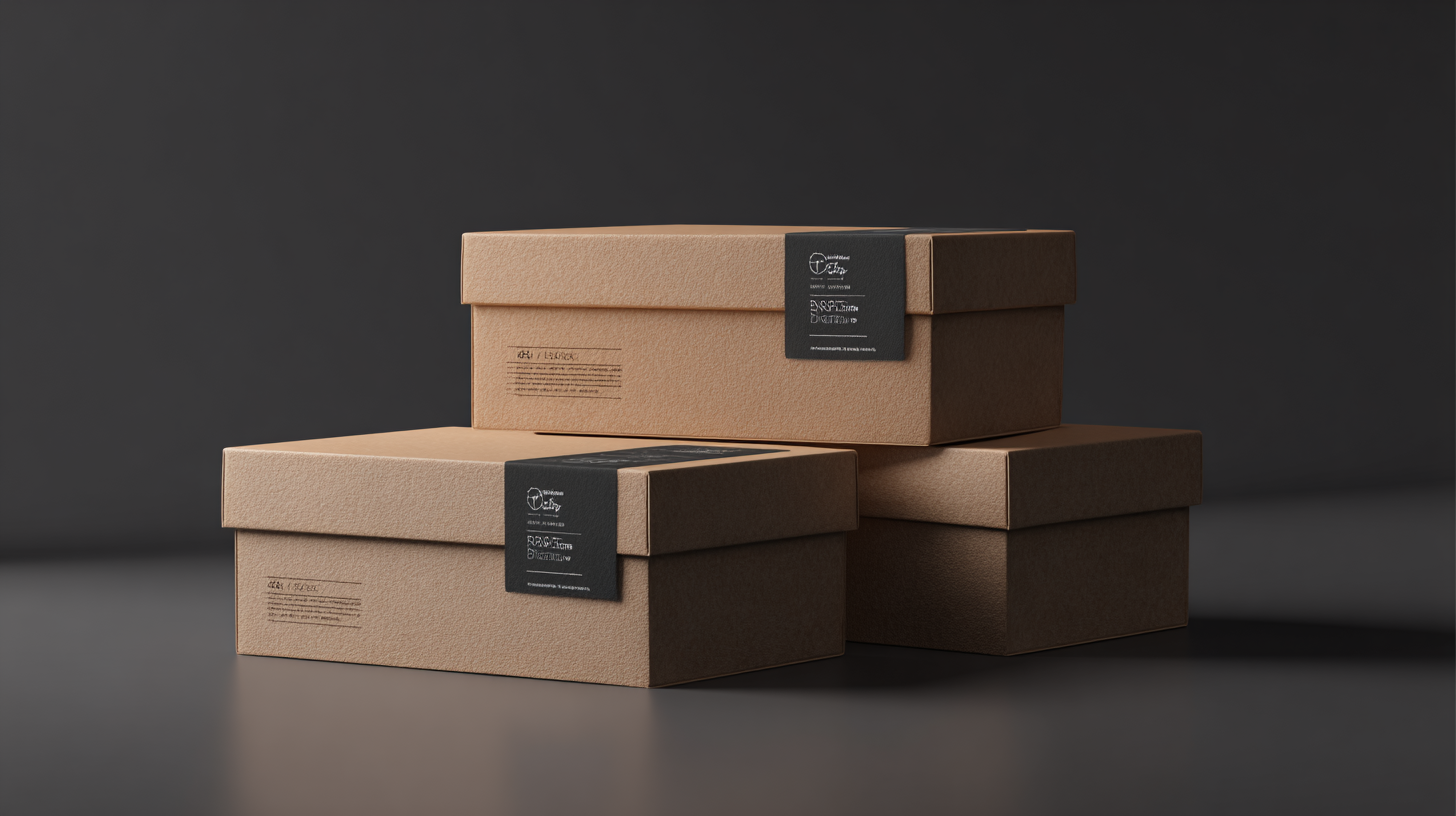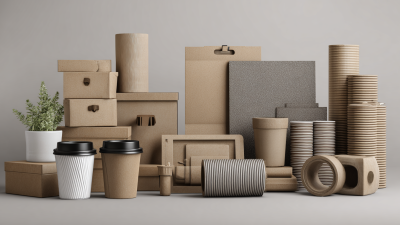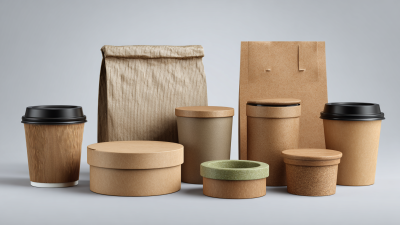How to Optimize Packaging Design for Increased Brand Recognition and Consumer Engagement
In the competitive world of consumer goods, the importance of effective packaging design cannot be overstated. As renowned packaging design expert, John Doe, once said, "The right packaging design not only attracts the eye but also tells a story that resonates with the consumer." This critical intersection of aesthetics and functionality becomes the backbone of brand recognition and consumer engagement.

Optimal packaging design serves as a silent ambassador for a brand, influencing buyers even before they engage with the product. It is the first touchpoint that can evoke emotions, spark curiosity, and ultimately drive purchasing decisions. The challenge lies in creating a packaging design that not only stands out on the shelf but also aligns with the brand's identity and values. By understanding the key principles of packaging design, brands can create memorable experiences that foster loyalty and recognition.
As we explore the "Top 5" strategies for optimizing packaging design, we will uncover actionable insights that elevate brand visibility and deepen consumer connections. Each of these strategies will demonstrate how thoughtful packaging can lead to a stronger market presence and enhanced customer relationships.
Understanding the Impact of Packaging Design on Brand Recognition: Key Statistics
 Packaging design plays a crucial role in shaping brand recognition and improving consumer engagement. Recent studies indicate that approximately 72% of consumers form their first impression of a product based solely on its packaging. This statistic underscores the importance of creating visually appealing and functional designs that not only attract attention but also convey the brand's identity and values.
Innovative use of colors, shapes, and materials can significantly influence consumer perceptions, making them more likely to choose one product over another on crowded shelves.
Packaging design plays a crucial role in shaping brand recognition and improving consumer engagement. Recent studies indicate that approximately 72% of consumers form their first impression of a product based solely on its packaging. This statistic underscores the importance of creating visually appealing and functional designs that not only attract attention but also convey the brand's identity and values.
Innovative use of colors, shapes, and materials can significantly influence consumer perceptions, making them more likely to choose one product over another on crowded shelves.
Moreover, research shows that well-designed packaging can enhance brand recall. Consumers are 50% more likely to remember a brand if its packaging is unique and stands out in the marketplace. Effective packaging acts as a silent salesperson, engaging customers and encouraging them to connect with the brand on a deeper level. By focusing on key design elements such as sustainability, clarity of information, and emotional resonance, brands can optimize their packaging strategies to foster greater recognition and bolster customer loyalty.
Leveraging Color Psychology in Packaging to Enhance Consumer Engagement
 Color psychology plays a crucial role in packaging design, influencing consumers' perceptions and emotions. The right color choices can evoke specific feelings and drive purchasing decisions, making it an essential factor for brands looking to enhance consumer engagement. For instance, warm colors like red and yellow can stimulate excitement and urgency, while cooler tones like blue and green tend to promote trust and relaxation. Understanding these associations can help brands align their packaging with the desired emotional response.
Color psychology plays a crucial role in packaging design, influencing consumers' perceptions and emotions. The right color choices can evoke specific feelings and drive purchasing decisions, making it an essential factor for brands looking to enhance consumer engagement. For instance, warm colors like red and yellow can stimulate excitement and urgency, while cooler tones like blue and green tend to promote trust and relaxation. Understanding these associations can help brands align their packaging with the desired emotional response.
Tips: Consider your target audience when selecting colors. For younger consumers, vibrant and bold hues may be more attractive, while a more muted and sophisticated palette might resonate better with an older demographic. Additionally, testing different color schemes through focus groups can provide valuable insights into consumer preferences.
Another effective strategy is to pair colors with relevant imagery that reinforces the product's message. For example, using earthy tones alongside natural product images can enhance the perception of sustainability and health. Integrating these elements in a cohesive manner not only grabs attention but also fosters brand recognition and loyalty.
Tips: Maintain consistency across packaging designs to create a recognizable brand identity. Utilize color swatches in your marketing materials to ensure that your color choices resonate with both your product’s values and your target audience's expectations.
The Role of Sustainable Packaging in Attracting Environmentally Conscious Consumers
Sustainable packaging is becoming a pivotal aspect of brand strategy, especially as environmentally conscious consumers drive market trends. According to recent reports, a substantial percentage of customers would pay a premium for products that feature high-quality, eco-friendly packaging. This consumer preference reflects a broader shift towards sustainability, influencing food packaging business models that prioritize waste reduction and the use of biodegradable materials.
BOPLA packaging, for instance, has been shown to extend the shelf life of fresh produce by as much as 40%, which not only minimizes food waste but also aligns with eco-friendly practices that appeal to today's consumers. The global food packaging industry faces mounting pressure to decrease its reliance on plastics and adopt circular packaging designs. These designs aim to maximize material efficiency and eliminate waste, supporting brands in cultivating loyalty among consumers who prioritize sustainability.
As the market for healthier and convenient snacking options continues to grow, businesses can leverage innovative packaging solutions to enhance brand recognition. Implementing sustainable practices not only addresses environmental challenges but also creates a unique selling proposition that resonates with a committed consumer base looking for reliable, responsible brands.
Impact of Packaging Design on Brand Recognition
This chart illustrates the percentage of consumers that recognize brands based on various packaging design features. The data highlights the importance of sustainable packaging in attracting environmentally conscious consumers.
Utilizing Innovative Materials and Textures to Stand Out on Retail Shelves
In today's competitive retail environment, packaging design plays a crucial role in enhancing brand recognition and consumer engagement. Utilizing innovative materials and textures can significantly impact a product's visibility on the shelves. According to a report by Packaging Strategies, nearly 70% of purchasing decisions are made at the point of sale, emphasizing the importance of eye-catching packaging. Brands that incorporate unique materials such as biodegradable plastics or tactile elements like embossed surfaces not only capture attention but also convey a message of sustainability and quality.
Recent advancements in packaging technology have introduced options like soft-touch finishes and interactive designs that invite consumers to engage more deeply with the product. A survey by Smithers Pira indicates that 39% of consumers are more likely to purchase a product that has an innovative packaging design. By focusing on the sensory experience of packaging—appeal to touch and sight—brands can forge a stronger emotional connection with consumers, enhancing their overall shopping experience. As companies continue to explore creative packaging solutions, the potential for increased brand loyalty and consumer engagement remains significant.
How to Optimize Packaging Design for Increased Brand Recognition and Consumer Engagement
| Material Type | Texture | Sustainability Rating | Consumer Engagement Score | Average Shelf Life |
|---|---|---|---|---|
| Recycled Cardboard | Smooth | A | 85 | 2 years |
| Bamboo Fiber | Textured | A+ | 90 | 1.5 years |
| Biodegradable Plastic | Glossy | B+ | 75 | 1 year |
| Glass | Smooth | A | 80 | 3 years |
| Metal (Aluminum) | Textured | B | 70 | 5 years |
Importance of Consistent Branding Elements in Packaging for Customer Loyalty
Consistent branding elements in packaging play a crucial role in fostering customer loyalty. A study conducted by Nielsen reveals that 59% of consumers prefer to buy new products from familiar brands, underscoring the importance of brand recognition. When packaging elements such as color, typography, and logo remain uniform across products, it not only builds familiarity but also creates an emotional connection with consumers. This sense of reliability encourages repeat purchases and strengthens brand loyalty over time.
To optimize packaging design, brands should incorporate essential tips. First, ensure that your packaging reflects your brand's core values and identity. For instance, eco-friendly packaging materials can resonate with environmentally conscious consumers. Secondly, maintain a cohesive color palette and font style across all product lines. According to a study by the American Marketing Association, consistent brand presentation can increase revenue by up to 23%. Lastly, consider the use of storytelling in your packaging, as it can enhance consumer engagement and create a memorable brand experience.
By focusing on these aspects, brands will not only improve their recognition but also cultivate a loyal customer base that resonates with their values and offerings.
Related Posts
-

Exploring Eco-Friendly Packaging Materials: A Sustainable Shift in Modern Supply Chains
-

The Ultimate Guide to Choosing Eco Friendly Packaging Supplies for Your Business
-

The Ultimate Guide to Sustainable Packaging Supplies for Eco-Friendly Businesses
-

The Future of Sustainability in Carton Packaging Techniques and Innovations
-

Innovative Trends in Food Packaging Design You Need to Know for Sustainable Choices
-

The Evolution of Ecofriendly Packaging Materials for Sustainable Living
